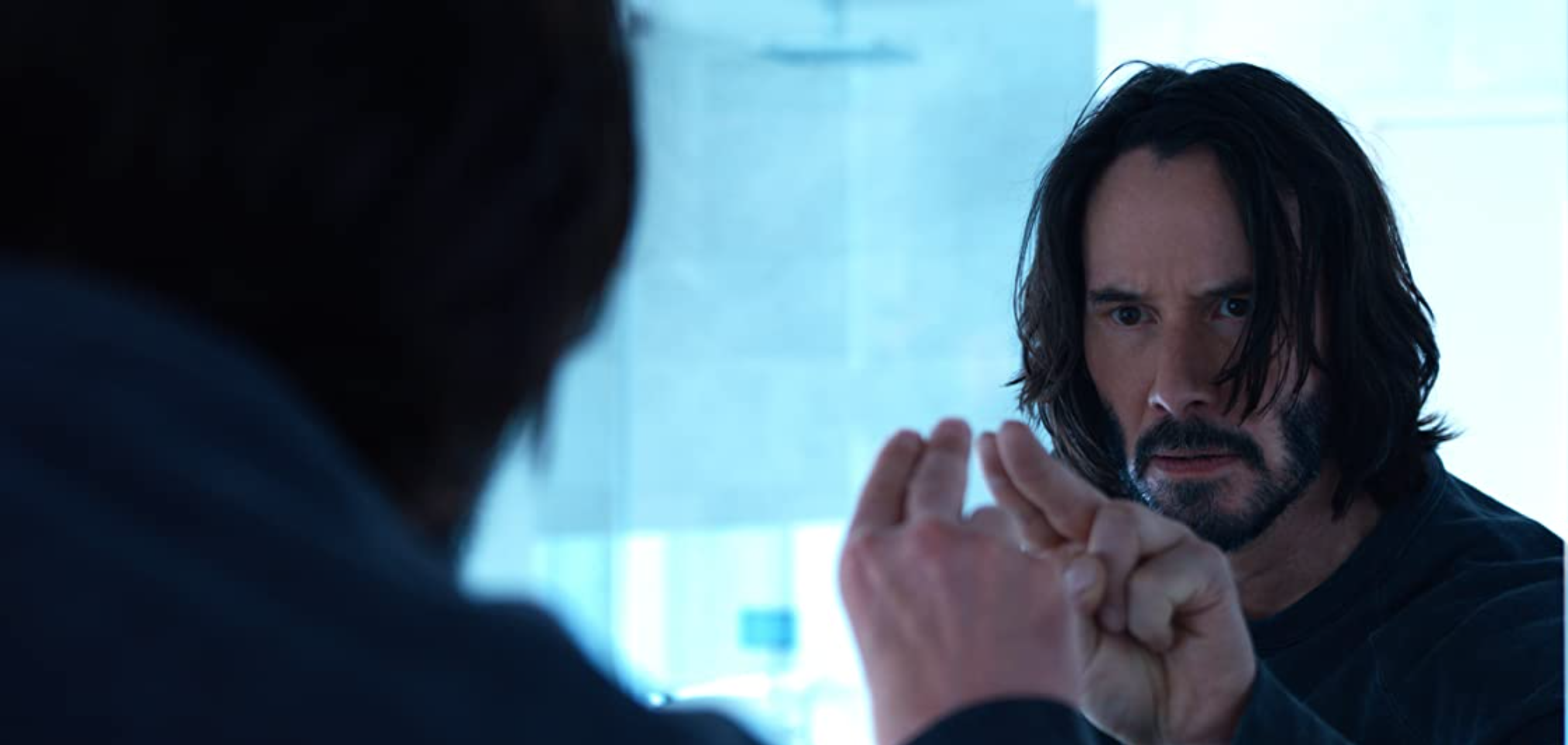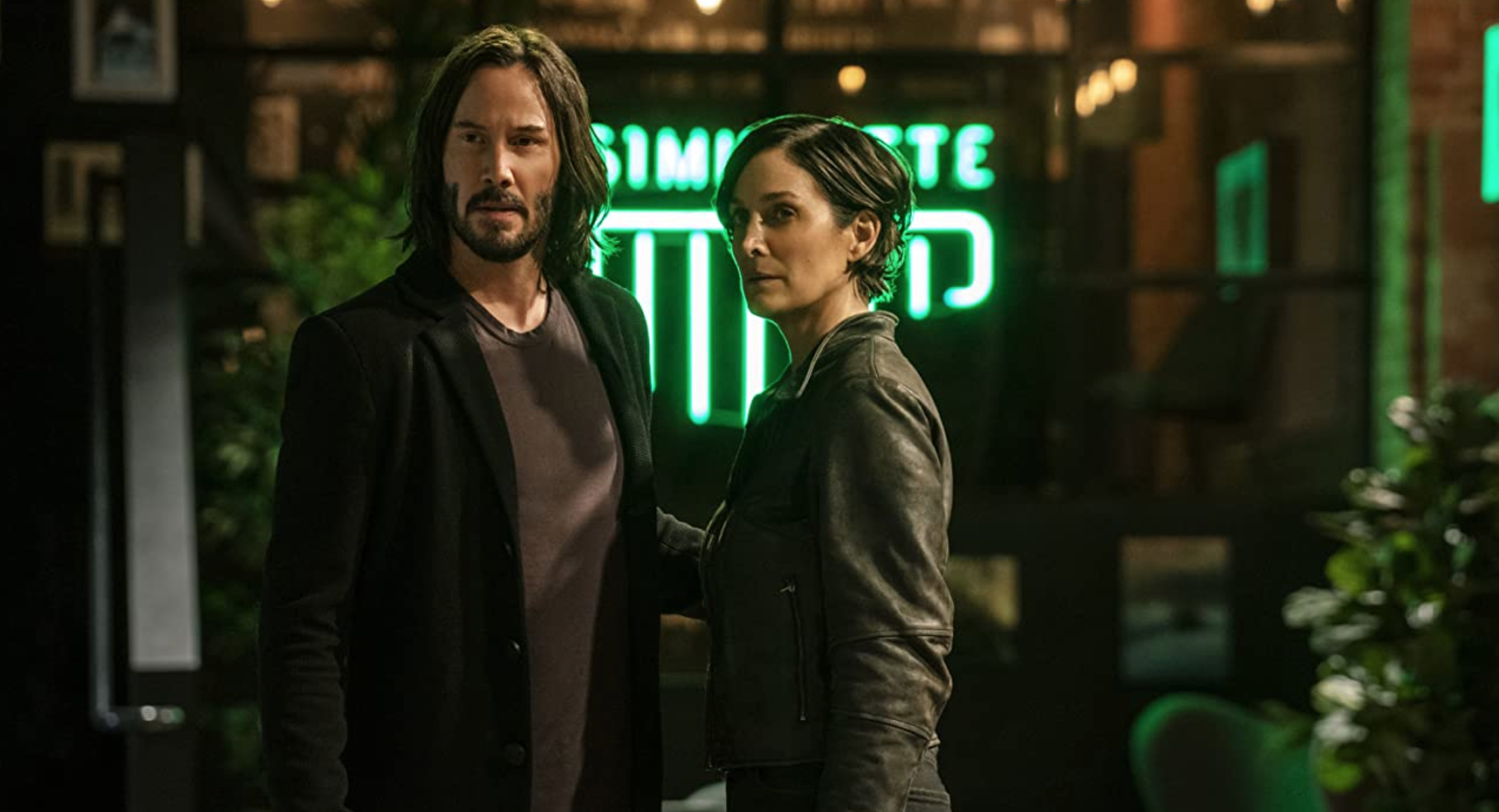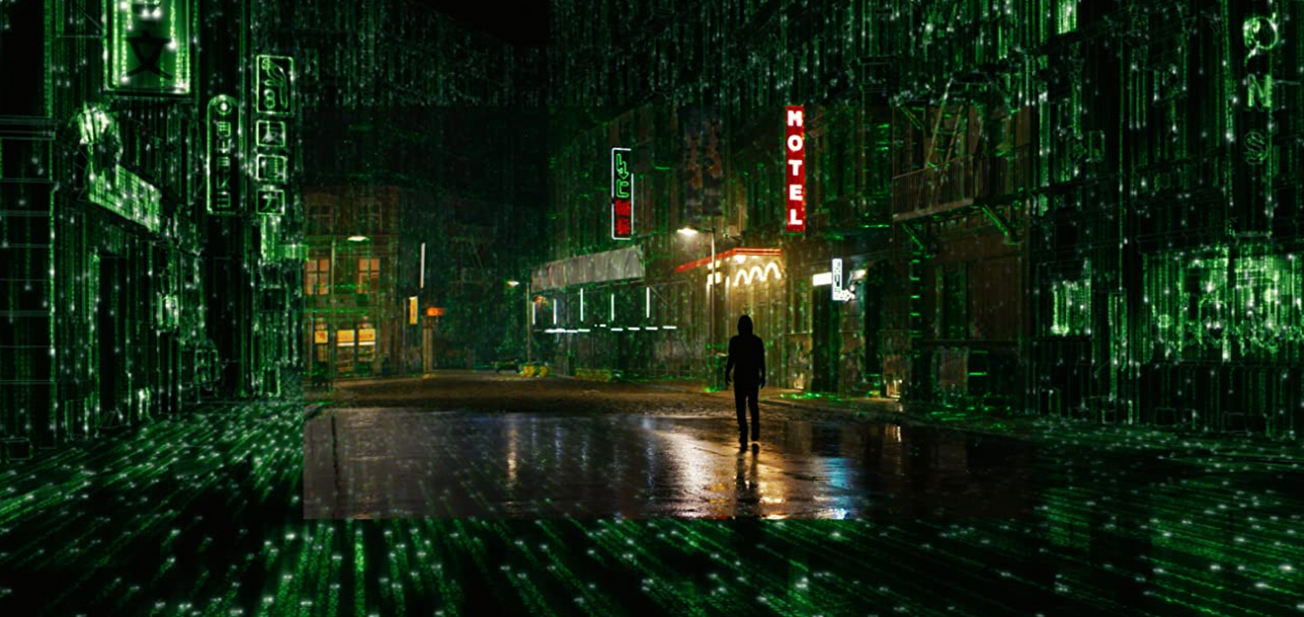By Claire Meakins, Second Year, English Literature
The Matrix Resurrections, a belated sequel to an iconic original trilogy, was faced with frantic questioning over whether another Matrix film was justified or simply a cash grab inspired by a trend for early 00s nostalgia. Unfortunately, the answer seems to be the latter, with the sequel feeling unnecessary and failing to live up to fan anticipation.

The film is set 60 years on from The Matrix Revolutions (2003) and opens with Neo (Keanu Reeves) living in a simulated reality as Thomas Anderson, the developer of a game series called The Matrix. This game series turns out to be based on the events of the original trilogy and Anderson struggles to differentiate his ‘reality' from the ‘imagined’ events in his games. Eventually, of course, Neo is freed from this ordinary life and his psychological dilemma and sets on a long-winded mission to rescue his love interest Trinity (Carrie-Anne Moss) and battle the new and improved Matrix.
Resurrections heavily relies upon the previous three films without really adding anything new to the series. Instead, this sequel acts more like a cheesy reunion of characters and ideas, full of in-jokes and on the nose references to the earlier films. The plot itself is formulaic, meaning that the film's only real appeal is nostalgia.

For hard-core Matrix fans perhaps this is enough to make it enjoyable, but otherwise it feels like a disappointing addition to a series which was famous for moving away from this sort of stereotypical action film fare. The long runtime of 2 hours and 30 minutes only heightens the sense of the film’s predictability as every plot point drags, making each climax and resolution easily guessable.
That being said, there are occasional glimpses of the original Matrix magic. The film has a strong start with an interesting meta premise, and the early scenes featuring the Analyst (Neil Patrick Harris) and Neo are particularly memorable. Harris provides a charismatic performance which manages to avoid falling into caricature (despite the odds being stacked against him). The film also begins with an amusing self-awareness of its position as a sequel.

However, this self-awareness is perhaps Resurrections' main weakness: it promises not to be exactly what it ends up being. Wachowski’s writing sets up expectations that it doesn’t live up to.
The film's appearance is also a mixed bag, although tonally consistent. Most shots are gloriously cyberpunk, combining beautiful neon and dark colour palettes, yet the special effects sometimes feel forced and almost comical. The film’s final scene falls flat for this very reason, with Neo and Trinity looking more like tumbling circus clowns than as though they are flying triumphantly. For a film renowned for being full of unique special effects and memorable fight choreography, these kinds of lapses are especially notable.

As a whole, Resurrections fails to deliver anything other than a strong dose of nostalgia and a stylish aesthetic. As a stand-alone action film with no legacy to fulfil it would be passable, but as a Matrix film it feels highly disappointing and lacklustre. Maybe its biggest redeeming feature is that it doesn’t interfere with the previous films, acting as an unnecessary add-on rather than a game-changing nightmare.
Featured Image: IMDB
Did Resurrections have you stepping back into The Matrix?









